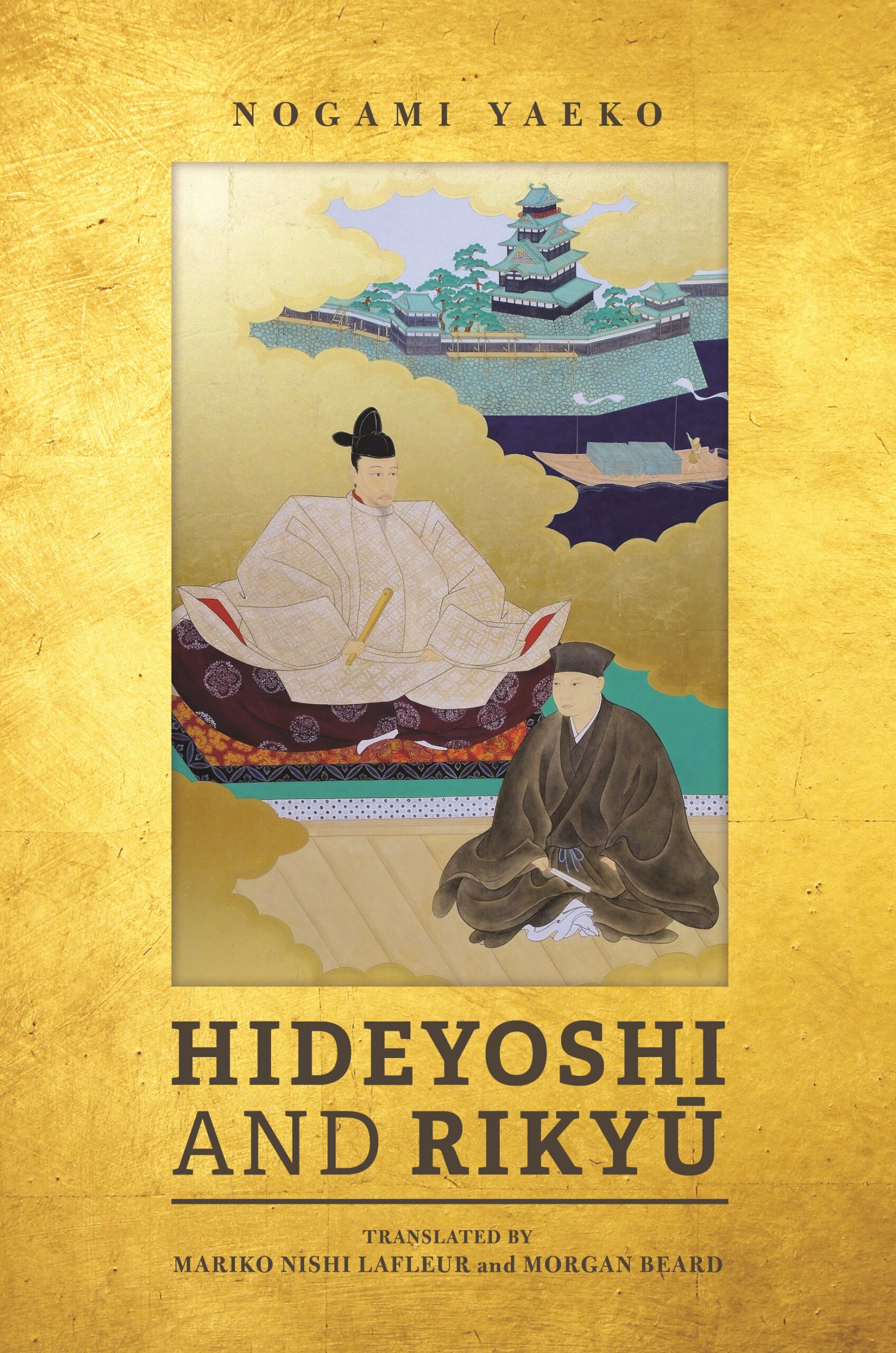Hideyoshi and Rikyū
- About the Book
-
“Hideyoshi made a strangled noise, words stifled by his rage. . . . [He] flew down from the dais, the toes of his gold brocade socks flashing over ten green grass mats in a second. Soji’s body was kicked from the corridor like a ball, hitting the stepping stone and rolling into the garden. . . . At the time, Rikyū was still in the tearoom, and knew nothing about it. On his way to see Hideyoshi, to inform him that the tea gathering had concluded successfully, Ōmura Yūki intercepted him and whispered urgently in his ear. But by that time, Soji’s head was already separated from his torso, lying in the corner of the stone wall.” —from Chapter 12
Nogami Yaeko’s compelling novel of political intrigue in sixteenth-century Japan depicts the intertwined lives of two iconic historical figures. Toyotomi Hideyoshi rose through the ranks from a common foot soldier to become the military ruler of Japan but struggled to win respect among the cultured nobility. He found both a friend and an invaluable political advisor in Sen no Rikyū, Japan’s most respected tea master. A wealthy merchant in his own right, Rikyū’s talent for tea ceremony propelled him into the ruler’s court. Deftly balancing Hideyoshi’s love of ostentatious display with the ideals of simplicity and rusticity embodied in the way of tea, Rikyū commands respect from loyal students and court nobles alike.
As the story opens, the two men are several years into their friendship, and tensions have begun to build. Hideyoshi pursues his quest to unify Japan, and his ego grows with every victory. Rikyū watches his friends exiled and pardoned according to Hideyoshi’s whims and longs for freedom from the excess and intrigue of court life. Nogami explores the dynamic politics of conquest, the delicate connections of the human soul, and the power of speech and silence in her elegant psychological portrait of two powerful men.
- About the Author(s)
-
Nogami Yaeko, Author
Nogami Yaeko (1885–1985) was the author or translator of fifty-seven volumes of published works. Among her best-known novels are Meiro (The Labyrinth, 1956), Hideyoshi to Rikyu (Hideyoshi and Rikyu, 1963), and Mori (The Wood, 1986).Mariko Nishi LaFleur, Translator
Mariko Nishi LaFleur trained and taught at the Urasenke tea school headquarters in Kyoto for many years, and has taught tea ceremony and Japanese culture and language in Japan and the United States for more than thirty-five years.Morgan Beard, Translator
Morgan Beard has an advanced teaching certification (jun-kyoju) from the Urasenke tea school and has taught tea culture throughout the Philadelphia area for more than twenty years. She currently serves as the chief of administration for the Philadelphia chapter of the Urasenke Tankokai Association.Martin Collcutt, Introducer
- Reviews and Endorsements
-
Nogami paints in vivid color an imaginative world of samurai, tea masters, battles, arts, and intrigue.
Suspending time, she invites the reader into the tea room to join Hideyoshi and Rikyū around the kettle.
It is truly a delight—and welcome escape—to finally have this masterpiece of tea fiction available in
English.
—Kristin Surak, author of Making Tea, Making Japan- Late-medieval Japan was torn by murderous rivalries and scheming warlords. The most powerful was Toyotomi Hideyoshi, the son of a farmer who rose to the pinnacle of political and social power. His favorite pastime? The preparation of ritual green tea. In his entourage was Sen no Rikyū, the most famous tea master in Japan. Much of what is characterized as a uniquely Japanese aesthetic from this era derives from Rikyū’s sense of beauty. Yet, on Hideyoshi’s order, Rikyū committed suicide. No one knows exactly why. Nogami’s historical novel explores in nuanced detail the way events may have provoked this cultural tragedy.
—Liza Dalby, author of Geisha and Hidden Buddhas
- Supporting Resources
-





